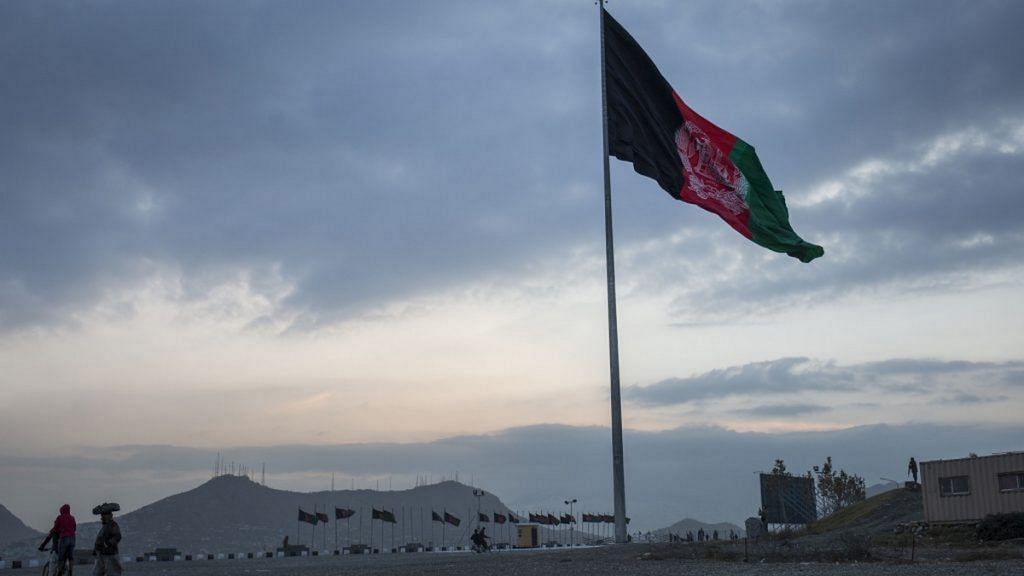New Delhi: India will continue to help crisis-hit Afghanistan and fund its humanitarian aid requirements, but at much lower levels than it did before the Taliban captured power last year, Budget allotments made by the Modi government show.
In Union Budget 2022-23, India has slashed its development assistance to the war-torn country to Rs 200 crore, down 43 per cent from Rs 350 crore in 2021-22 (Budget estimates), when Kabul was under a democratic government.
As is usual practice, Bhutan has been given a major chunk of the budgetary allocation for development assistance to India’s neighbours. However, Bangladesh has witnessed a significant jump this time, with aid going up to Rs 300 crore in FY23 from Rs 200 crore in FY22.
According to sources, while budgetary allocation for a particular fiscal keeps getting tweaked over the year in accordance with the geopolitical needs, the figures are indicative of the Narendra Modi government’s priority as it has to focus on some of the key nations in the neighbourhood now if it must counter China’s growing influence.
With the Taliban taking over Kabul last year, India has suspended its diplomatic presence in Afghanistan by shutting down the embassy and the four consulates there, and has also halted all the big-ticket and small and medium infrastructure projects there. This has led to the fall in budgetary allocation, sources said.
Moreover, the Modi government has also temporarily suspended scholarships to Afghan students who used to travel to India every year for higher studies.
Under the former Ashraf Ghani regime, India had been running several large-scale infrastructure projects in Afghanistan through grants and other kinds of assistance.
However, with Afghanistan facing a humanitarian catastrophe as its economy continues to collapse under the Taliban regime, India has decided to continue its aid to the Afghan people.
New Delhi has already supplied four batches of large-scale medical consignments to Afghanistan, consisting of essential life-saving medicines and vaccines, since the Taliban took over Kabul on 15 August 2021.
In the coming days, India has plans to send 50,000 tonnes of wheat to Afghanistan via Pakistan, in collaboration with the UN World Food Programme.
Also read: With Ukraine situation tense, India-Russia hold high-level talks as Moscow takes up UNSC chair
Aid to other neighbours
At Rs 2,266 crore, Bhutan continues to be the largest recipient of India’s assistance due to the rise in development work.
Almost one-third of India’s total aid assistance goes to Bhutan every year as New Delhi continues to remain involved in building large-scale hydro projects and several other small and medium projects in the neighbouring country, sources said.
India’s key development projects in Bhutan as part of its aid assistance include the Mangdechhu Hydroelectric Project, Punatsangchhu Hydroelectric Project, the E-Library Project and introduction of Rupay Cards, among others.
With Bangladesh, the expenditure has witnessed a rise as India has been involved in the celebrations around the birth centenary of ‘Bangabandhu’ Sheikh Mujibur Rahman, the father of that nation, and the golden jubilee of the country’s independence.
During his visit to Bangladesh in 2021, PM Modi had also announced some large-scale connectivity projects that are strategically key for India’s foreign policy.
The budget allocation for Myanmar is at Rs 600 crore, up nearly one-third from Rs 400 crore in 2021-22.
India has continued to remain diplomatically engaged with the junta in Myanmar after the military coup last February, that overthrew the democratically elected government.
According to sources, New Delhi will continue to support the ongoing development projects there.
The assistance programme
The overall budget of the Ministry of External Affairs (MEA) has been increased 20 per cent to Rs 17,250 crore for 2022-23, up from Rs 14,329 crore in 2020-21.
This is due to the fact that the government aims to roll out e-passport schemes too this year.
The spending will likely begin towards India’s preparations for the G20 presidency next year.
“Despite the fact that the Taliban have taken over, it’s a message to the Afghan public that India still is interested in their welfare. It’s of course a lower aid allocation than in 2020-21 because at that time, we were involved on ground in many projects,” said former foreign secretary Kanwal Sibal.
“In the case of Bangladesh, in which we’ve increased our aid allocation, it’s a political message to the Sheikh Hasina government that India will provide continuous support to Bangladesh and deepen the relationship. You can’t ignore the China factor either, because they have a large presence there also. We want to deepen our position in the country for a longer term too,” he said.
On aid to Myanmar, Sibal said while the rest of the world has been imposing sanctions on Myanmar and pushing it more and more into an alliance with China, India can’t be in the same boat and needs cooperation because both countries share a border.
“In fact, we saw a major refugee influx into the Northeast when the junta took over last year. So, the aid allocation reflects that we are interested in stabilisation in the country and the money allocated is of course, for projects to benefit the people, not for lining the pockets of the junta,” he added.
(Edited by Amit Upadhyaya)
Also read: India ready to engage with Pakistan on expanding list of pilgrimage sites, mode of travel: MEA
